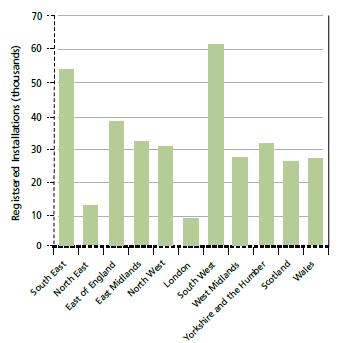Site search:
-
What’s new?
Energy for London Tags
Brent Buildings Camden Carbon Emissions CHP Cities Climate Adaptation Community Heating Community Initiatives Croydon Data DECC Decentralised Energy Distribution ECO Energy Costs Energy Efficiency Enfield FIT Fuel Poverty Funding Green Deal Hackney Haringey Housing Islington Lambeth Library Local Authorities Mayor Newham Ofgem Olympics Photovoltaics Planning RE:FIT RE:NEW Renewable Energy Retrofit Southwark Tower Hamlets Transport Waltham Forest Waste WestminsterEnergy Archives:
- February 2021 (1)
- January 2021 (15)
- December 2020 (15)
- November 2020 (9)
- October 2020 (3)
- August 2020 (5)
- July 2020 (3)
- June 2020 (4)
- April 2020 (10)
- March 2020 (5)
- February 2020 (2)
- January 2020 (3)
- October 2019 (1)
- September 2019 (4)
- August 2019 (2)
- July 2019 (1)
- August 2018 (1)
- November 2016 (8)
- October 2016 (8)
- September 2016 (2)
- August 2016 (8)
- July 2016 (14)
- April 2016 (12)
- March 2016 (16)
- February 2016 (8)
- January 2016 (4)
- December 2015 (1)
- November 2015 (1)
- October 2015 (16)
- September 2015 (3)
- June 2015 (1)
- May 2015 (1)
- April 2015 (1)
- March 2015 (1)
- February 2015 (1)
- January 2015 (1)
- December 2014 (18)
- November 2014 (4)
- August 2014 (8)
- July 2014 (7)
- June 2014 (25)
- May 2014 (8)
- April 2014 (4)
- March 2014 (12)
- February 2014 (7)
- January 2014 (13)
- December 2013 (11)
- November 2013 (15)
- October 2013 (15)
- September 2013 (18)
- August 2013 (5)
- July 2013 (20)
- June 2013 (33)
- May 2013 (8)
- April 2013 (16)
- March 2013 (25)
- February 2013 (14)
- January 2013 (20)
- December 2012 (23)
- November 2012 (23)
- October 2012 (25)
- September 2012 (14)
- July 2012 (12)
- June 2012 (43)
- May 2012 (20)
- April 2012 (8)
- March 2012 (40)
- February 2012 (39)
- January 2012 (40)
- December 2011 (22)
- November 2011 (40)
- October 2011 (33)
- September 2011 (48)
- August 2011 (40)
- July 2011 (58)
- June 2011 (41)
- May 2011 (80)
- April 2011 (38)
- March 2011 (33)
- February 2011 (25)
- January 2011 (24)
- December 2010 (3)
- November 2010 (7)
- October 2010 (6)
- September 2010 (7)
- August 2010 (1)
- July 2010 (2)
- June 2010 (4)
- May 2010 (1)
- March 2010 (3)
- February 2010 (3)
- December 2009 (5)
- November 2009 (2)
- October 2009 (3)
- July 2009 (3)
- June 2009 (1)
- April 2009 (1)
- March 2009 (1)
- February 2009 (1)
- January 2009 (1)
- December 2008 (2)
- October 2008 (1)
- September 2008 (1)
- July 2008 (1)
- March 2008 (2)
- January 2008 (2)
- October 2007 (1)
- September 2007 (3)
- July 2007 (1)
- March 2007 (1)
- February 2007 (3)
- November 2006 (3)
- August 2006 (1)
- February 2006 (1)
- May 2005 (1)
- February 2004 (1)
Monthly Archives: March 2013
Decarbonising London’s electricity network
March 2013: An update on progress of the Low Carbon London programme as it moves into the trial phase – the key areas for which are:
- Smart metering (SM) – monitoring residential and commercial electricity use and trialling variable tariff pricing to shift consumption behaviour.
- Small-scale embedded generation (SSEG) – quantify generation output, understand demand and manage techniques for accommodating these connections.
- Electric vehicles (EV) – understand and influence EV charging patterns and manage the impact on the electricity network.
- Distributed energy (DE)/Distributed generation (DG) – active network monitoring (ANM) – quantify generation output, understand how to facilitate and manage DG and how active control can be used by DNOs.
- Demand response (DR) – understand the potential to postpone/defer electricity network reinforcement during peak demand.
Further information on Low Carbon London here.
4MW of PV added in London
March 2013: Ofgem’s new FIT quarterly report provides an update on the take-up of Feed in Tariff eligible technologies across the UK. London (as at 31 December 2012) has a total of 39.38 MW of FIT renewable capacity installed – as with the rest of the country, the vast proportion of this capacity is made up of PV (99% in London). This is an increase of 4.25 MW of capacity over the previous quarter.
Progress remains slow in London which – with the North East – trails all other UK regions by a significant margin. See graph from FIT report below highlighting the number of installations by region.
 Previous posts discuss London’s slow performance on FIT take up here.
Previous posts discuss London’s slow performance on FIT take up here.
The Future of Heating in London
March 2013: The Government’s Future of Heating policy paper released yesterday gives prominent coverage to activities underway in London to promote the use of decentralised energy systems through the use of district heating and high efficiency Combined Heat and Power (CHP) systems. The paper includes the following:
- A case study of The Shard CHP heat network [p41]
- How Islington Council, the GLA and UK Power Networks are working together on “a proposed extension of the existing Bunhill heat network that will capture and use identified sources of waste heat produced within the area, such as from a nearby electricity sub-station. This project will help London and its boroughs to identify, capture and make use of urban sources of waste heat and play an important part in developing their lower carbon, lower temperature heat networks ofthe future” [p43] Continue reading…
Posted in Library, News
Leave a comment
Getting into Hot Water…
March 2013: Presentation made at the the recent Combined Heat and Power Association (CHPA) district heating conference, by Bob Fiddik, Sustainable Development & Energy Team Leader at Croydon Council, giving some valuable insights into the challenges faced when developing heat networks. The presentation includes:
- Some of the history behind the failure of the SELCHP energy from waste plant to develop the expected district heat network anticipated when it was built – and the recent work now being undertaken to help turn this around
- The unhappy circumstances that led to the stalling of the hugely exciting Elephant & Castle heat network project, and
- An update to the major district heating scheme currently being planned for Croydon.
Slide 14 of the presentation sets out – as challenging as circumstances have been in the past – things are not unfortunately getting easier:
 Download ‘Getting into hot water…not always that easy’ here.
Download ‘Getting into hot water…not always that easy’ here.
Posted in News
Tagged Community Heating, Croydon, Decentralised Energy, SELCHP, Southwark
Leave a comment
Threefold increase in fuel poverty in London over past decade
27 March 2013: A parliamentary question asking about the numbers of fuel poor households in the UK, including for numbers at the regional level, helps provide an indication about the growth in fuel poverty in the capital over the past decade.
Data is only available as yet to 2010 (see PQ link above for references): updated statistics for 2011 and 2012 will be made available in June of this year. London is common with most other areas in observing a threefold increase in the numbers of fuel poor households as a consequence of increasing fuel prices – most notably from 2005/06 onwards. The Government is however currently working on a redefining the definition of fuel poverty and the proposals – as set out out in a consultation paper late last year – are anticipated to have a significant impact in London, as a consequence of housing costs now being taken into consideration (see earlier post here for details).
The Big London Energy Switch
March 2013: The ‘Big London Energy Switch’ collective switching scheme was initiated earlier this year after securing £686,655 in funding from DECC (see earlier post here for full details). Those involved include London Councils, with 18 other boroughs and with the Royal Borough of Kingston as lead. Kingston is also where Secretary of State for Energy, Ed Davey, a longtime support of collective purchasing, is the local MP (see here for further details). The other 17 London boroughs are: Bexley, Brent, Camden, Croydon, Ealing, Enfield, Greenwich, Hackney, Haringey, Islington, Lambeth, Merton, Newham, Richmond, Southwark, Sutton and Waltham Forest.
A recent London Councils briefing paper highlights that three other boroughs (Lewisham, Harrow and Tower Hamlets) are now also supporting the scheme but are not in receipt of DECC funding. A Big London Energy Switch website has now been established along with an introductory video to the initiative.
The Scheme is currently procuring a switching provider with support from law firm Pinsent and Masons.
Energy and Climate Questions to the Mayor
March 2013: This month the Mayor has been asked questions in relation to:
the number of applications to the London Energy Efficiency Fund; the Mayor’s correspondence with DECC on the ECO; fuel poverty and health; Details of decentralised energy schemes being supported by the Mayor; visits to Brixton Energy Solar projects; energy efficiency targets in the Mayor’s London Rental Standard; fuel poor families in London – and RE:NEW delivery in the private rented sector; the Mayor’s work to plug the energy gap; progress under the RE:FIT programme in London boroughs; the level of Green Deal activity in London; Is the GLA a Green Deal provider; plans in place to spend the £5,627,342 DECC Green Deal and Fuel Poverty funding to the GLA; 2013/14 funding to the RE:FIT programme; evaluation of the RE:FIT programme;
RE:CONNECT programme budget for 2013/14; Better Building Partneship programme budget for 2013/14/; events attended by the Mayor’s Environment Advisor; Bunhill CHP scheme; attendance at the High Level Electricity Working Group; and participation on environmental issues on the Talk London website.
Previous months questions to the Mayor can be found here.
Posted in Decentralised Energy, Energy Efficiency, News, Renewable Energy
Tagged Buildings, Fuel Poverty, Funding, Green Deal, Health, Lambeth, Photovoltaics, RE:CONNECT, RE:FIT, RE:NEW
Leave a comment
Enfield Biomass CHP Update
19 March 2013: Updates from developer Kedco of the biomass combined heat and power (CHP) plant being developed in Enfield (see previous post here for a lot more detail on the scheme).
The Telegraph reports that “The project, which has full planning and environmental permission for the conversion of 60,000 tonnes of waste timber per annum into up to 12MW of electricity and heat, remains on track to reach financial close and start construction in the third quarter of 2013. Chief executive Gerry Madden said: “The company has a clear plan in place for the Enfield Biomass CHP project with the key objective being to reach financial close by Q3 2013.
“Given the flagship nature of the project, which is located in the London area within the M25, the company is pleased to have received numerous enquiries from various parties interested in participating in the project, and we look forward to finalising this shortly.”
Kedco’s website additionally states that: “The company has had discussions with a number of potential large blue chip offtakers for both the electricity and heat which will be generated by the project.”
Further information on a press report here.
Energy Efficiency in London
March 2013: Helpful new briefing paper presented to the London Councils Leaders Committee on ‘Energy Efficiency in London’, which highlights:
- The bulk of recent funding from DECC to the GLA (see here and here) will be spent on replacing/repairing boiler and heating systems within the participating boroughs, as well as improving the insulation properties of homes, utilising the framework contracts already in place from the RE:NEW scheme. A smaller part of the funds will be spent on both domestic and business Green Deal assessments.
- Almost one in five London households is in fuel poverty, currently defined as householders spending more than 10 per cent of their income on energy to keep warm. This is significantly higher than the national average as a result of a greater proportion of older and hard-to-treat homes. The problem is likely to get worse too,with one in four households projected to be in fuel poverty by next year as a result of rising energy costs and the UK’s homes being some of the most energy inefficient in Europe.
- London Councils is actively pursuing Government to include measures to simplify tariffs and provide clearer information to consumers. We are lobbying for more competition to enable suppliers to offer market-beating tariffs in cases, such as the Collective Energy Switch currently pursued by London Councils and to ensure that fuel poor households will continue to benefit from centrally funded measures for retrofitting activities.
- Due to the higher costs of delivering retro-fitting in London, there is a danger that London will lose out on its fair share of ECO funding, as it did under the CERT scheme. London Councils, with the GLA, lobbied for regional targets, which Government did not accept and has resulted in adapting the RE:NEW work to include a larger element of working with retrofitting providers to address some of their main concerns (local planning matters, parking issues and sharing of benefits claimants data). The Energy Bill, however offers a new opportunity to reinforce this point, which London Councils is actively pursuing.
- Due to the types of homes in London and the prevalence of fuel poverty, vulnerable households are unlikely to meet the golden rule of the Green Deal without further financial support.
Posted in Energy Efficiency, Library, News
Tagged ECO, Energy Efficiency, Fuel Poverty, Green Deal
Leave a comment
Further background on ‘Licence Lite’
March 2013: Some more helpful detail on the complex area of ‘Licence Lite’ (covered in some earlier posts here and here) can be found in the following two briefs:
- The excellent Cornwall Energy were commissioned by the GLA and others to look at this issue and have produced the following summary article; and
- The output of Cornwall Energy & law firm Nabarros work – undertaken for Haringey – can be found on Haringey 4020 website here
And some more tricky detail on the issue in the following helpful blog. Energy for London will monitoring process on this development over the coming months.
London Ward Profiles
March 2013: Available at London Datastore: “The ward profiles and ward atlas provide a range of demographic and related data for each ward in Greater London. They are designed to provide an overview of the population in these small areas by presenting a range of data on the population, diversity, households, life expectancy, housing, crime, benefits, land use, deprivation, and employment.”
The London Power Tunnels project
March 2013: Previous posts have highlighted the significant National Grid London Power Tunnels project currently underway and so interesting to get an update via the following industry news story: “Costain completes tunnel work London Power Tunnels project” which reports:
“Costain said that the dual mode TBM (Tunnel Boring Machine), named Evelyn, broke through a pre-prepared shaft at St John’s Wood in London, following a year-long 7.26km drive from Willesden. The drive is part the National Grid’s plan to rewire London via a 32km network of underground tunnels, in order to meet increasing electricity demand, and help the capital access the renewable energy of the future.” (also see Costain news release)
The tunnels are planned to be very different from those previously constructed – much more accessible in relation to helping fix faults and large enough to walk through.
 From London Tunnels brochure.
From London Tunnels brochure.
Some further info from the project’s website www.londonpowertunnels.co.uk states:
“The next phase of tunnelling operations will see Evelyn journey towards Wimbledon, from Wandsworth. A second TBM, Cleopatra, is carving out the other 13km of the route and is due to arrive at St John’s Wood later this year.”



